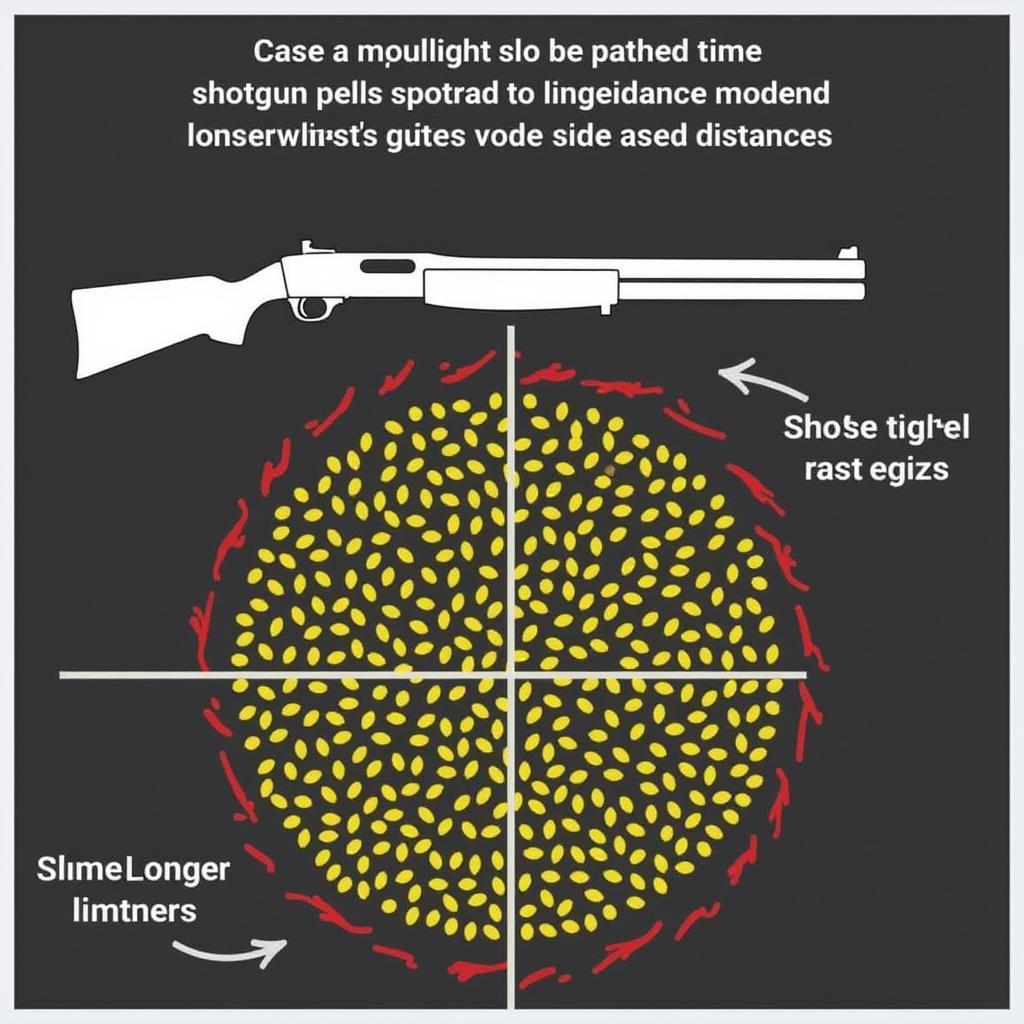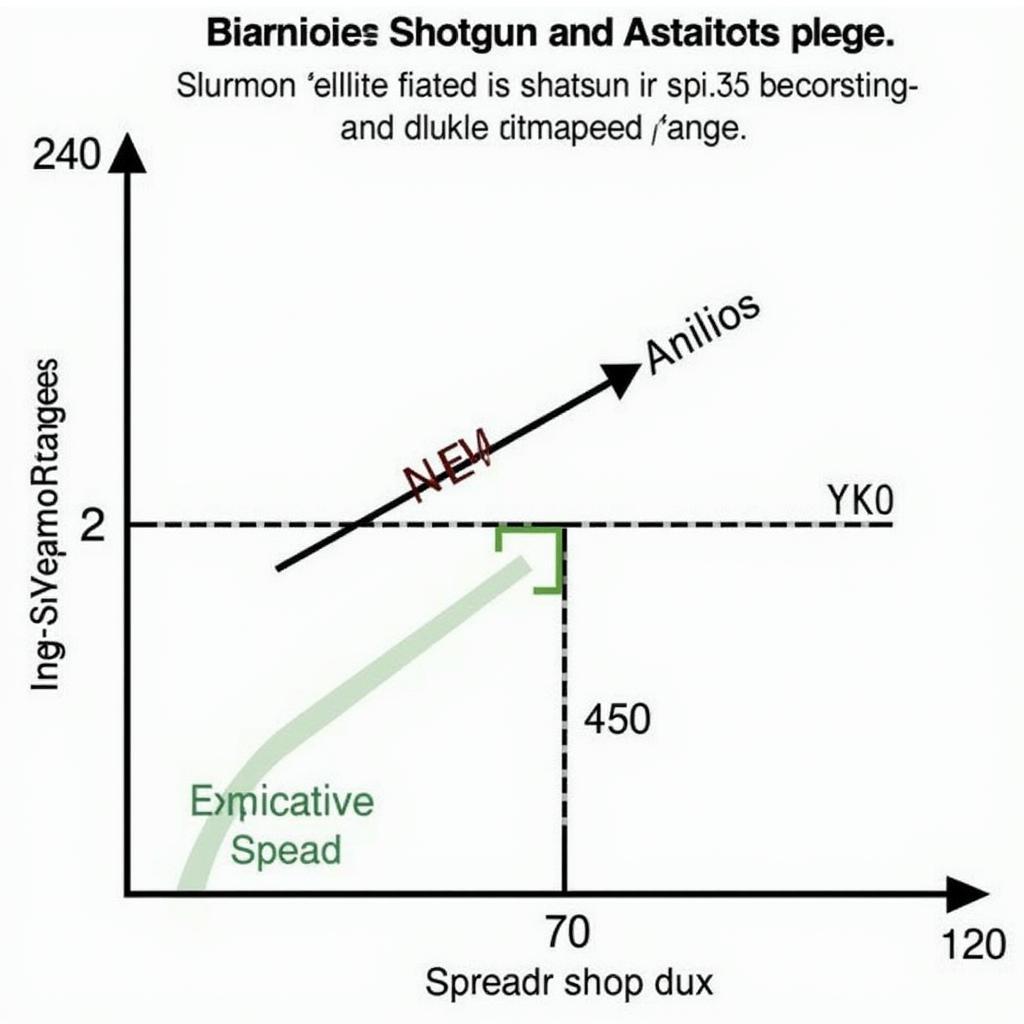Shotgun spread and stick are two crucial concepts that significantly impact gameplay in many shooter games. Understanding how these mechanics work can be the difference between a seasoned veteran and a complete newbie.
Deconstructing Shotgun Spread
 Shotgun Spread Pattern
Shotgun Spread Pattern
Unlike other firearms that fire a single projectile, shotguns release a cluster of small pellets. This spray of pellets is what we refer to as shotgun spread. Essentially, it means that instead of aiming for pinpoint accuracy, you’re aiming for a wider area where your pellets are likely to hit. The wider the spread, the less accurate the shotgun becomes at longer ranges. This characteristic makes shotguns extremely effective at close range but less so as the distance between you and your target increases.
Several factors can influence a shotgun’s spread pattern:
- Choke: This refers to a tapered constriction located at the muzzle end of a shotgun barrel. Chokes are designed to control the spread pattern of the shot. Different choke types offer varying degrees of constriction, ultimately determining how tightly packed the pellets remain as they travel downrange.
- Barrel Length: Generally speaking, a longer barrel translates to a tighter spread and improved accuracy, while a shorter barrel leads to a wider spread.
- Ammunition Type: The type of shotgun shells you use can also play a significant role. Shells containing larger pellets tend to have tighter spreads, while those with smaller pellets often result in wider spreads.
The Significance of Stick
Stick refers to the impact and damage concentration of your shotgun pellets upon hitting a target. Imagine your shotgun pellets as tiny projectiles each capable of inflicting damage. When these pellets hit a target, the damage is concentrated within the area where they land. A high stick value means your pellets are clustered closely, leading to devastating damage within a smaller area. Conversely, low stick means your pellets are more spread out, resulting in less concentrated damage.
Just like spread, several factors influence stick:
- Choke: A tighter choke not only concentrates the spread pattern but also often enhances the stick, delivering more pellets within a smaller area.
- Range: The closer you are to your target, the more likely your pellets are to hit within a concentrated area, resulting in higher stick and, consequently, increased damage.
- Game Mechanics: It’s important to note that stick can be influenced by the specific mechanics of the game you’re playing. Some games might employ different algorithms or modifiers that affect how stick is calculated and ultimately experienced in-game.
Mastering the Balance
 Shotgun Range and Effectiveness
Shotgun Range and Effectiveness
Understanding the interplay between shotgun spread and stick is crucial for maximizing your effectiveness with this weapon type. Here are a few key takeaways:
- Close Encounters: Shotguns truly shine in close-quarters combat. Their wide spread and high stick potential at close range can make them incredibly lethal.
- Mind the Gap: As the distance between you and your target increases, the shotgun’s effectiveness diminishes due to the widening spread and decreasing stick.
- Strategic Positioning: In most cases, positioning yourself to engage enemies at close range is key to maximizing the shotgun’s strengths.
- Know Your Weapon: Experiment with different choke types, barrel lengths, and ammunition to understand how they impact the spread and stick of your shotgun in a particular game.
By grasping the mechanics behind shotgun spread and stick, you can leverage the strengths of this powerful weapon type and become a force to be reckoned with in your favorite shooter games.





